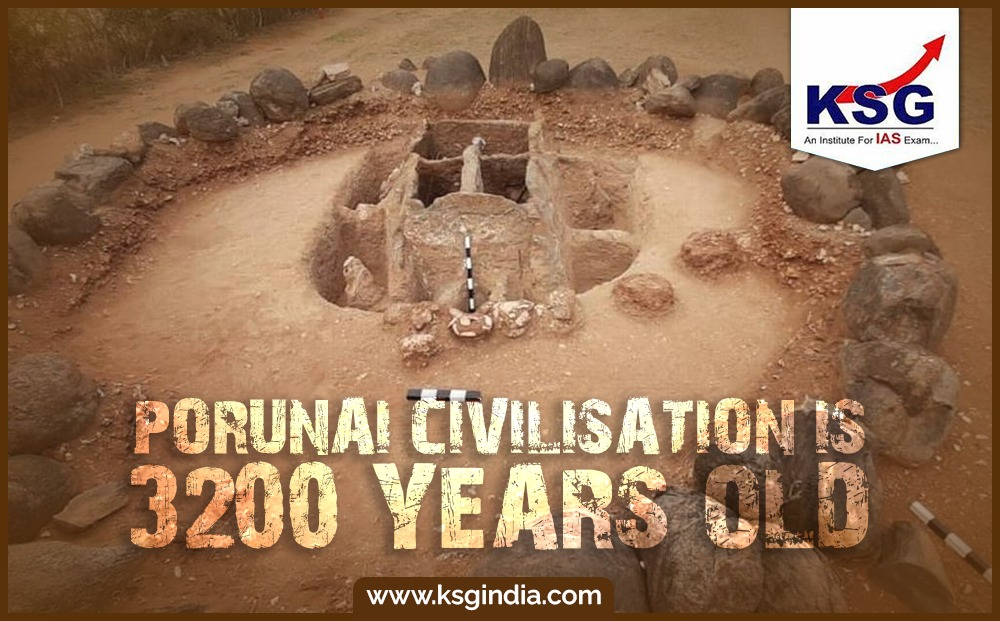Porunai civilisation is 3,200 years old

A carbon dating analysis of rice with soil, found in a burial urn at Sivakalai in Thoothukudi district of Tamil Nadu, by the Miami-based Beta Analytic Testing Laboratory
Porunai civilisation is 3,200 years old

A carbon dating analysis of rice with soil, found in a burial urn at Sivakalai in Thoothukudi district of Tamil Nadu, by the Miami-based Beta Analytic Testing Laboratory has yielded the date of 1155 BC, indicating that the Thamirabarani civilisation dates back to 3,200 years.
More Points:
- Chief Minister M.K. Stalin on Thursday announced in the Assembly the establishment of Porunai Museum in Tirunelveli at a cost of ₹15 crore.
- The finding has established that the Porunai river [Thamirabarani] civilisation dates back to 3,200 years. It is the government’s task to scientifically prove that the history of the Indian subcontinent should begin from the Tamil landscape.
- The archaeological excavations would be carried out in other States and countries in search of Tamil roots. In the first phase, studies would be undertaken at the ancient port of Muziris, now known as Pattanam, in Kerala.
- The research will be done jointly with Kerala archaeologists to establish the ancientness and culture of the Chera empire.
- The Tamil Nadu Archaeology Department would conduct research at Quseir al-Qadim and Pernica Anekke in Egypt, which were once part of the Roman empire, as well as in Khor Rori in Oman, to establish the Tamils’ trade relations with these countries.
- The carbon dating of the objects unearthed there had proved that the Tamil society had achieved literacy even in the sixth century BCE.
Carbon Dating Technique
- Carbon-14 dating, also called radiocarbon dating, method of age determination that depends upon the decay to nitrogen of radiocarbon (carbon-14). Carbon-14 is continually formed in nature by the interaction of neutrons with nitrogen-14 in the Earth’s atmosphere; the neutrons required for this reaction are produced by cosmic rays interacting with the atmosphere.
- Radiocarbon present in molecules of atmospheric carbon dioxide enters the biological carbon cycle: it is absorbed from the air by green plants and then passed on to animals through the food chain. Radiocarbon decays slowly in a living organism, and the amount lost is continually replenished as long as the organism takes in air or food. Once the organism dies, however, it ceases to absorb carbon-14, so that the amount of the radiocarbon in its tissues steadily decreases. Carbon-14 has a half-life of 5,730 ± 40 years—i.e., half the amount of the radioisotope present at any given time will undergo spontaneous disintegration during the succeeding 5,730 years. Because carbon-14 decays at this constant rate, an estimate of the date at which an organism died can be made by measuring the amount of its residual radiocarbon.
